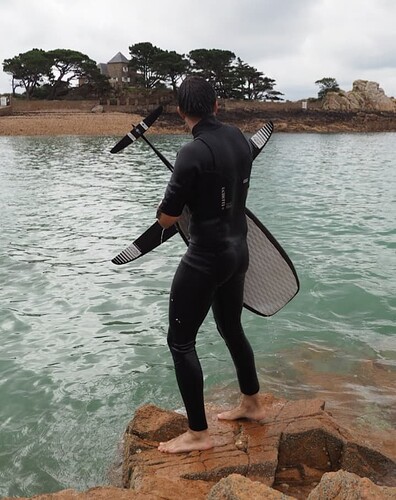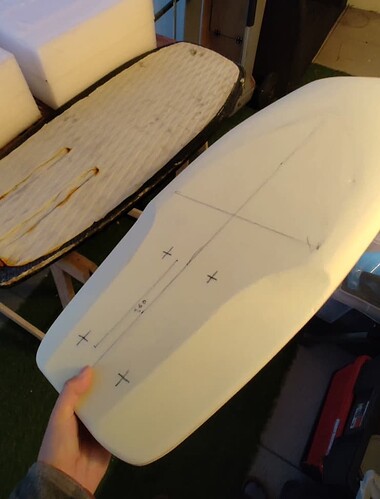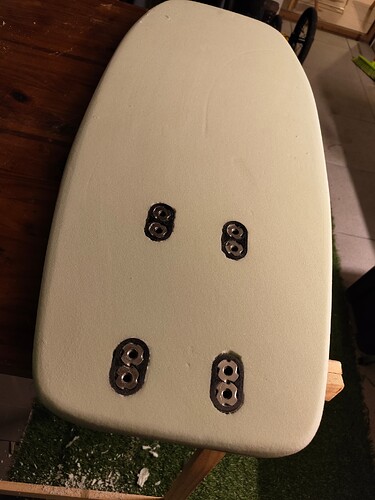Hello, this winter I will be out of action due to shoulder surgery, so I started working on a new pump board. Let’s call it the board I want to crack 5 minutes on, everyone needs a challenge ![]()
First I had a plywood plank, then a 3D printed board.
After the printed board, I did a carbon one based on a XPS blank (#1)
I had issues with delamination, foil box breaking, and in the end after a few reinforcement steps, the board worked fine for 25+ sessions, but the weight was between 2.2kg (dry) and 2.6kg because of some water intrusion.
This was also the board I learned to rock start on, and it has some scars from it.
Thankfully due to the multiple repairs the rails have like 6 CF layers on it ![]()
So having tested a 1.2kg board with a art pro 1401, I know weight has a huge impact in the energy you spend. As with guys working on road bikes for positions and aero gains, same can be applied for pumping, each watts gained or saved counts.
The goal for #3 is below 1.5kgs for sure, and if possible below 1.2kg.
To get there, a few things :
1- No USBOX, just a set of inserts, to provide different bolt patterns :
2- No deckpad, using either wax or some sand in the top coat
3-AIREX/DIVINCELL core, 50kg/m3 instead of the usual 80kg/m3
The shape of #1 was perfect for my needs, so I reused it for # and added a pin tail style shape for looks. 82x36cm
At the moment I am unsure about the inserts, they are stainless steel furniture nuts, in a PA6-CF25 part of the same thickness as the blank, so will be sandwiched in the CF, and the bolt pressure will mostly try to compress the PA6-GF25 instead of the AIREX/DIVINCELL core.
CORE : 365gr
Inserts : 165gr
Layup :
bottom
2 CF 200gr
1 GF 125gr
Top
1 CF 200gr + Feet area 1 CF 200gr
1 GF 125gr
I think I will add either two arrow shafts, or 1/2 8x10mm wood stringers on the bottom, from back inserts to the first 1/3d of the board. My XPS board failed because the CF delaminated, and Buckled under compression forces on the bottom surface. It also failed due to the use of low quality resin.
If you have a novel, or better idea for the inserts and construction, I would be happy to hear it!


















